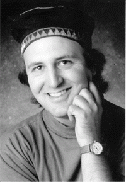OLSON CONFERENCE: broadsides, & more
The Olson conference, CHARLES OLSON: LANGUAGE AS PHYSICAL FACT, is now only two weeks away. I'm having great success & great fun at the Vandercook Press at Chax, printing a suite of broadsides of some of the most visual pages from The Maximus Poems, with permission granted by the University of California Press. The UA Poetry Center is being terrific in their role as conference venue/cosponsor. The conference takes place Oct 10-11 in Tucson, and you can find more information, and register, at the Chax Olson pages. You can also read some comments by participants on the Poetry Center's newsletter.
Here's what I wrote a month ago for that newsletter, regarding the broadsides:
CHARLES OLSON: LANGUAGE AS A PHYSICAL FACT will open with an exhibition of a Suite of Broadsides from Chax Press. Charles Alexander, poet, scholar, editor, and book artist, says of the project, “I'm not trying to add ‘additions’ in terms of art. Without Olson around, it seems better to just honor the work.” But as fans of fine art letterpress editions know, their materiality alone will be a pleasure to behold, let alone the expansive and arresting nature of the Olson poems they display.
Broadside: the fire from a cannon on the side of a ship, or frequently the simultaneous fire from all of the cannon on one side of an 18th century man of war, at close range. These cannons weren’t all that effective unless at short range, from which they could pierce the well-built hull of a wooden ship. This term then applied to printed pieces, printed on one side of a sheet of paper, most often in large type, posted publicly for political purpose. Sometimes rebellious purposes, or anti-rebellious purposes – think of the Gunpowder Plot or the Popish Plot of 17th Century England. There were also broadside ballads, in the 16th & 17th century, songs circulated and sung in public. Broadsides then, meant to have large impact, yet getting some of that impact through bold and artful design, intended for public purpose.
Broadsides today are often where printers, designers, and publishers play. An artful field on which to dance with word and image, color and form. A sheet that may be printed, marked, folded, sprayed, embossed, debossed, sewn, cut through, collaged, possibly even kissed, like Oscar Wilde’s tomb at Pere Lachaise. Play for the sheer fun of it, or conscious attempt to work out design issues. Short pieces of text, so quite often poems, though I have printed very short stories, quotations, single lines of text, and broadsides that have no text at all. Some broadside producers have designed text into shape, image, altar. I have sewn two differently printed sheets of paper together with red thread, standing for the blood of the body or the anger in our minds. I have printed COURAGE on a small sheet of paper to send to friends around the globe, at times when that trait seemed sorely needed.
The first time I ever set something in metal type, put it in a press, fed paper through that press, the resulting image was a broadside. Four short poems I had written, in black, another color for the inspired title “Four Poems,” a line at the bottom of explanation and of thanks to my teacher and mentor in printing and in thinking about relationship of type to paper to image to space. As I pulled page from press cylinder, I was hooked. Words on paper, poems in space, letters and forms in the field, were from then on a part of my life. I painted that page with an abstract brush stroke, hung it in a room, eventually framed it. It stands as beginning.
Now, September 2008, broadside to me means Charles Olson broadsides, the field of The Maximus Poems, letters cut in time and space, the poet the one who has taught me more than any other about the field of the poem, taken as history, archaeology, time, space, page and possibility. He writes of migration, and I migrate letters into their place on the field, in and on the broadside. Not so much cannon blast, as invitation. Come into this space. Enter the wor(l)d.
--Charles Alexander
I hope to see you at Charles Olson: Language as Physical Fact. Come for the exhibition, come for the readings, come for the panel, come for the film, come for the conversations, come for it all!

